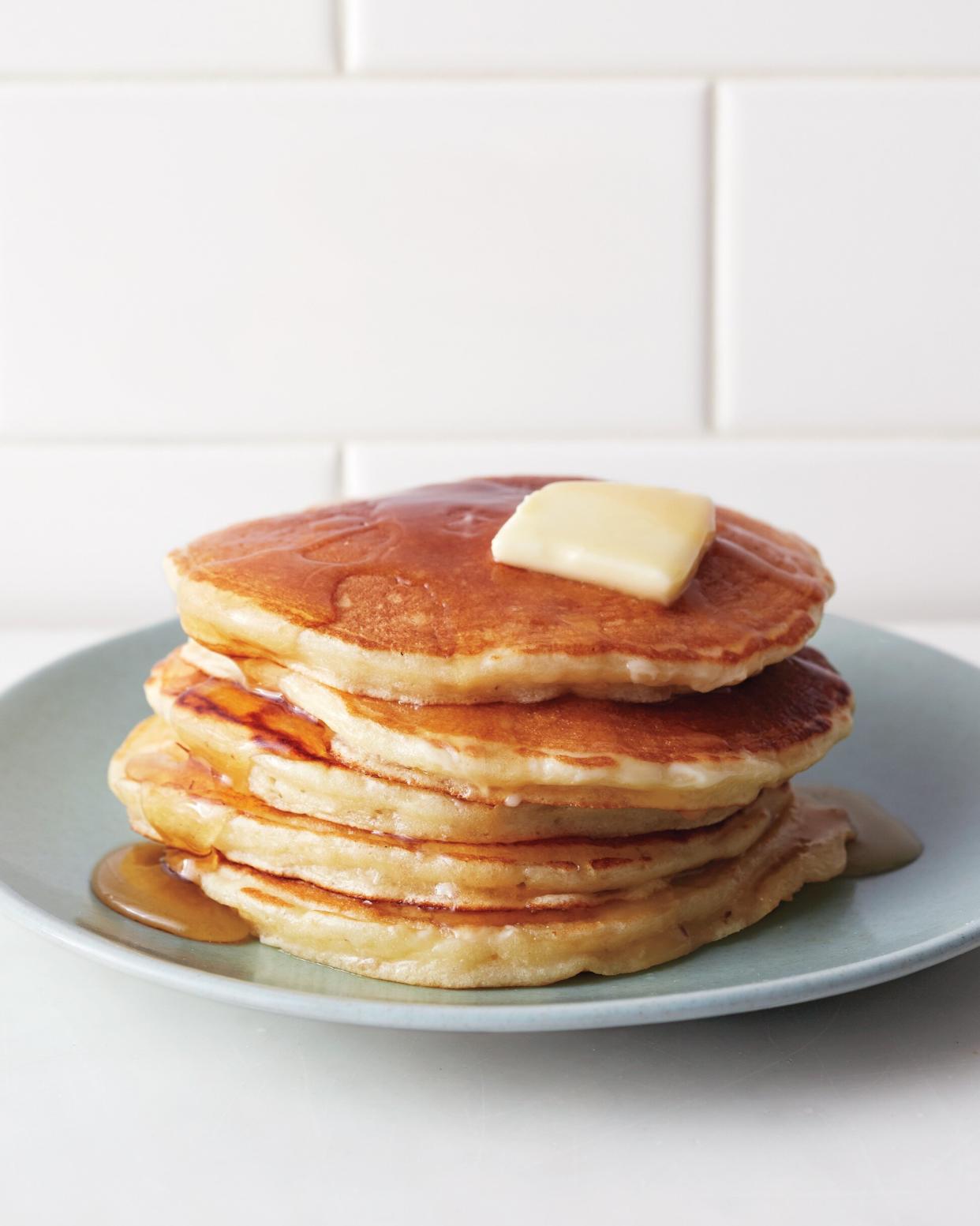How to Make Sure You Get Fluffy Pancakes Every Single Time

Bryan Gardner
Picture it: a splendid stack of pancakes, golden and lightly crisped all around the edges and fluffy and tender through the center. Thankfully, this dream can be a reality. All you need to do is learn a few simple secrets that will make your batter behave.
The basic pancake formula is so simple, you probably already have the ingredients on hand: flour, egg, leavener, fat, and liquid. But 100 different people could follow the very same recipe and produce 100 very different stacks of pancakes, ranging from dense and tough; flat and chewy; and charred on the outside and gooey in the center. Or, they could be the pinnacle of pancake perfection—light and tender to the last forkful.
Ultimately, when it comes to making pancakes, the difference between success and disappointment is all about your technique. Our smart tips will help ensure your make fluffy pancakes every time.
Related: 30 Perfect Pancake Recipes for Breakfast or Brunch
Inspect Your Ingredients
It usually goes without saying that fresh ingredients make for better results. For some foods (think fruits and vegetables), it's obvious whether or not the item is fresh—but it can be harder to tell with pantry ingredients like flour, baking soda, and baking powder. So, before you start cooking, give your dry ingredients a check.
Sniff Your Flour
Expiration dates offer a clue, but they aren't exact—so give your flour a sniff. If it smells a bit like Play-Doh, that means it has gone rancid, and anything you make with it just isn't going to taste right. It's time to buy fresh flour.
Test Your Leavener
Next, it's time to check your leaveners—your baking soda and baking powder. Put a spoonful in a small bowl and add a few drops of vinegar to see if it fizzes. The fresher the leavener, the more rising power it has. And remember to pay close attention to the recipe: baking soda and baking powder are not interchangeable.
Combine Carefully
Once you determine that your ingredients are fresh and ready for use, it's time to mix them together with care.
Keep Dry and Wet Ingredients Separate
Don't skip the initial steps of incorporating dry and wet ingredients in separate bowls. The "separate bowls" part is actually where most of the mixing is done. By the time you reach the step of combining wet and dry ingredients, all that's left to do is delicately fold the mixtures together—just until you no longer see any dry spots of flour, that is.
Don't Over-Stir
With every additional round of stirring beyond this, you're making your pancakes a little tougher (since gluten develops in the flour) and less fluffy (which happens when leaveners release bubbles).
Related: Our Easy Basic Pancakes Recipe Is the Best
Let Your Batter Rest
Leaveners start to act as soon as they come in contact with liquid, so remember the clock is ticking. However, if you allow your bowl of pancake batter a brief rest—about 10 minutes—the leaveners will continue to work their magic, creating and expanding into thousands of tiny pockets of carbon dioxide. The fluffier the batter, the fluffier the pancakes.
Remember that thick batter can't be poured, so use a big spoon, measuring cup, or ice cream scoop to portion your batter into the pan.
Make a Test Pancake
Allow your skillet or griddle to fully heat up before you add batter. Then, swirl a generous amount of butter, oil, or a combination of the two into the hot pan and portion out a single scoop of batter to make a test pancake.
This is your practice run to gauge and adjust the temperature and cook time, peeking frequently at the underside to check if it is browning at the right pace. The underside should reach a gorgeous shade of gold just as the uncooked batter on top loses its wet sheen—indicating that it's time to flip. Turn the heat up or down as needed until you get the balance just right.
Flip with Care
You've used fresh ingredients, mixed them with care, and fine-tuned the temperature. All that's left to do is flip the pancakes.
Skip the Flipping Theatrics
Avoid the urge to flip a whole skillet full of pancakes like a cartoon chef. This unnecessary roughness won't do your pancakes any good: Instead, choose a thin, broad spatula (the same width as the pancakes, if possible) and turn each one over as gently and quickly as possible. The second side should take less time than the first, so keep an eye on them.
Don't Press
It's tempting to press down on the pancakes post-flip with a spatula while impatiently waiting for them to be ready, but that will just smash them down into a dense and gummy patty, undoing all your efforts.
Serve Immediately
There are many ways to keep pancakes warm while you cook additional batches, but really, pancakes are at their best when they go directly from pan to plate—so make sure the table is set, the syrup is warm, and your hungry, appreciative crew is ready to eat the fluffiest pancakes ever.

